Looking northeast, 1905.
(Courtesy Duke Archives)
The First Presbyterian Church began when Dr. Richard Blacknall moved from 'Red Mountain' (Rougemont) to Durham in 1860 and persuaded Revs. James and Charles Phillips to come from Chapel Hill to hold sermons in the Trinity Methodist or First Baptist churches. His wife organized Sunday school classes in the First Baptist Church as well. The congregation was organized in 1871 during a meeting of the "Orange Prebytery" which met in the old Durham Academy building (no relation to the current school) on Chapel Hill St. to form a church composed of 11 members.
The church functioned for several more years without a structure of its own, until it was able to purchase a site at the corner of the Roxboro Road and Main St. in 1875 and construct a small frame church building.
Looking northeast ~1880 at the intersection of Roxboro and Main, as well as the Presbyterian Church and surrounding houses. Many of these simpler frame houses would later be replaced by more ornate structures. You can note the ornate E.J. Parrish House in the distance to the right side of the picture.
(Courtesy Duke Archives)
George W. Watts (who funded the construction of Watts Hospital - twice) was an early member of the church congregation, and helped fund missionary trips to Cuba, Brazil, Korea, various parts of Africa, and other parts of the U.S.
By 1890, this structure was no longer adequate to hold the congregation, and new Gothic Revival church, with a 70 foot tower, was constructed on the same site to replace it, with the financial assistance of Mr. Watts.
Looking northeast, 1905.
(Courtesy Duke Archives)
Looking northwest from E. Main St., 1905.
(Courtesy Durham County Library)
Looking west on East Main St., ~1900. First Presbyterian is on the right.
(Courtesy Durham County Library)
Looking east on East Main St. from Church St., ~1900
(Courtesy UNC)
Looking northeast, 1910.
(Courtesy Duke Archives)
In 1916, the church hired architects Milburn and Heister (Carolina Theatre, Union Station, etc.) - better known for their neoclassical designs - to design a new Gothic Revivial structure for them to replace the previous brick structure. The result was an impressive structure of contrasting brick and stone and deeply recessed stained glass across the front facade.
First Presbyterian, looking northeast, 1917.
In 1922, the church added a 'church house' adjoining the structure to the east.
The church and church house in 1926, looking northwest.
(Courtesy Durham County Library)
A partial view of the chruch from the air, looking northwest, 1924. The Eligibility building is to the left, the Malbourne Hotel directly across Roxboro, and the Afton Inn and other large residences along Roxboro are visible moving towards the top of frame.
(Courtesy Duke Archives)
The congregation continued to grow throughout the 20th century.
First Presbyterian and the Public Library, visible during a parade on East Main St., looking northeast, 1940s.
As with the remainder of the downtown churches, the 1950s and 1960s were a difficult period, in which suburban migration changed the neighborhood considerably, and the natural base for the congregation. The surrounding residential neighborhood was demolished in the late 1960s by the City of Durham using urban renewal funds. The church's website notes that the congregation voted to stay downtown during this period.
First Presbyterian demolished part of its own structure in 1963, destroying the rear wing of the building (I'm not sure what its function was) that is visible in the 1924 picture above.
Recently demolished, 1963 - looking southeast from Roxboro.
(Courtesy Durham County Library)
New educational building built in its place, 1964 - looking southeast from Roxboro.
(Courtesy Durham County Library)
Along with St. Philip's, Trinity Methodist, and First Baptist, First Presbyterian was a founding member of Congregations in Action, which sought to provide assistance to residents of Oldham Towers and the Liberty St. Apartments.
First Presbyterian continues to be an active congregation downtown, involved in numerous religious and civic actvities.
Looking northeast, 2006.
First Presbyterian Church, 05.21.11

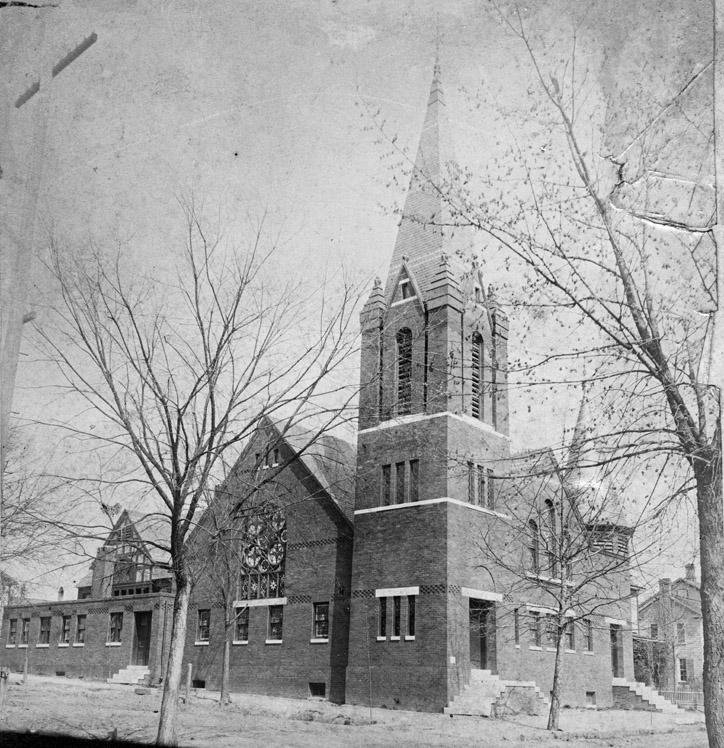
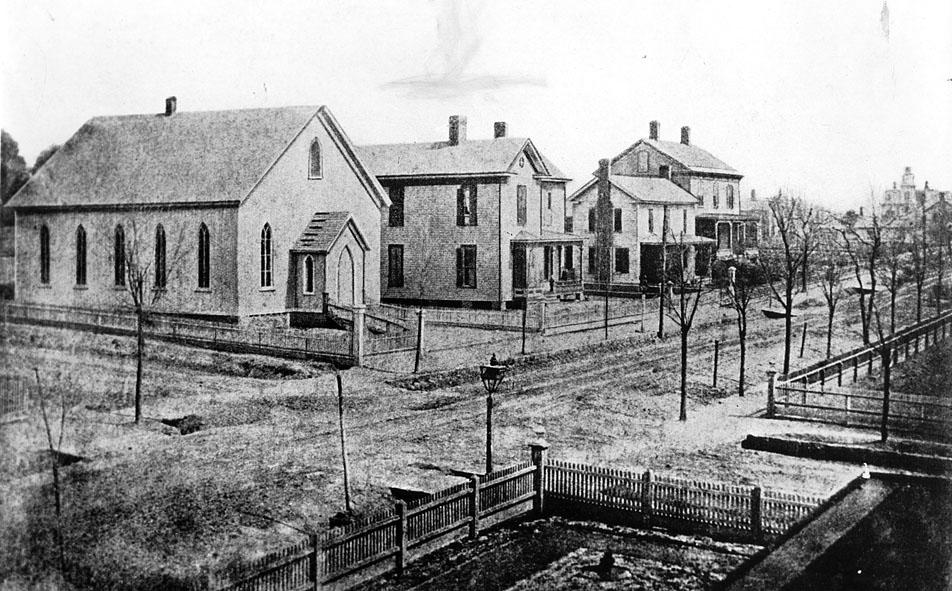
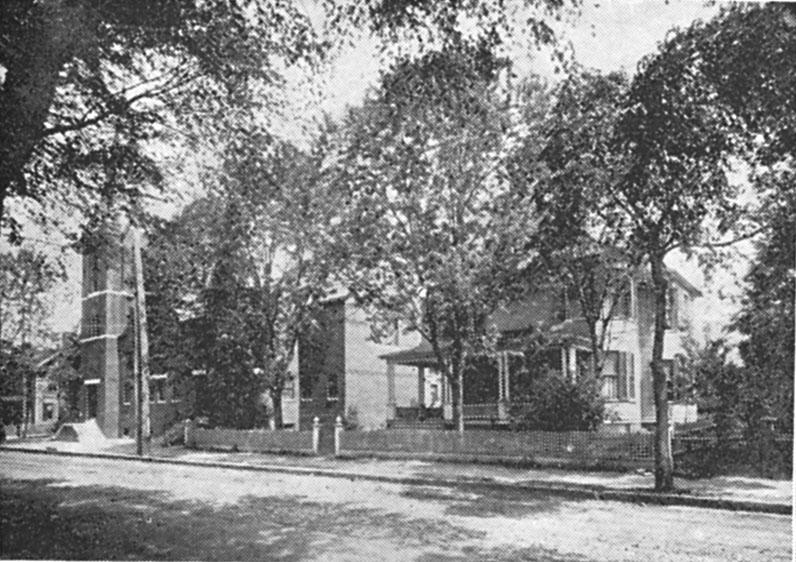
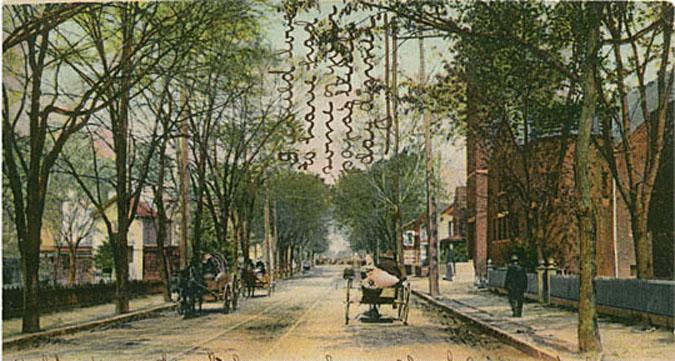
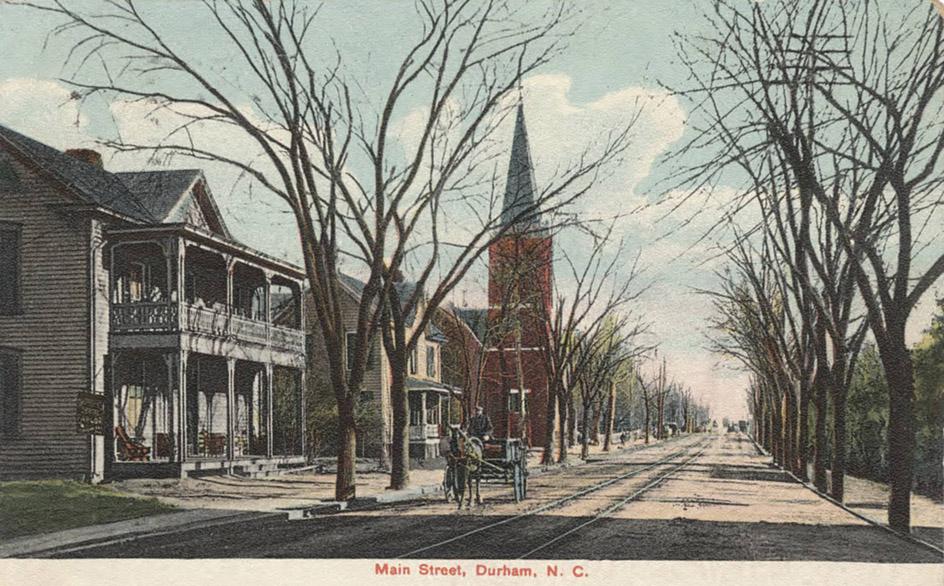
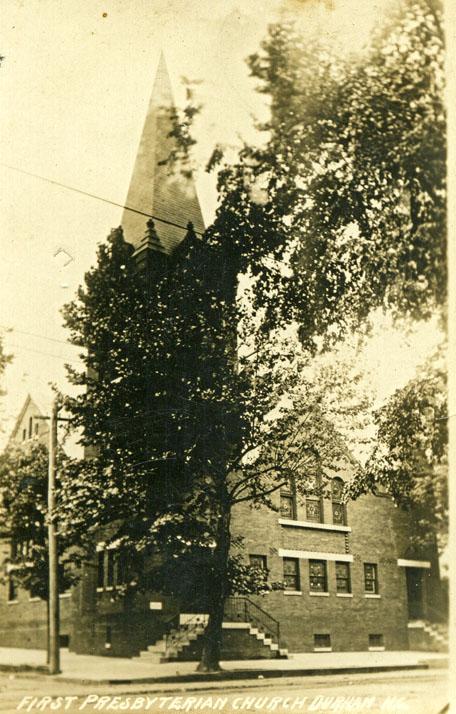

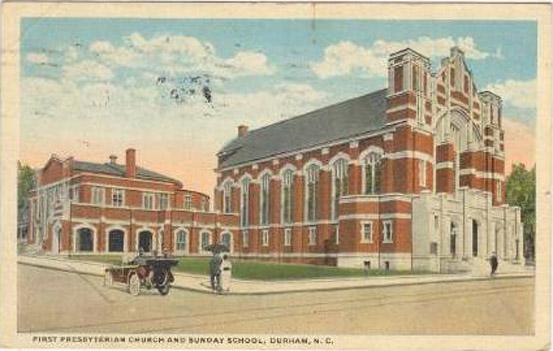
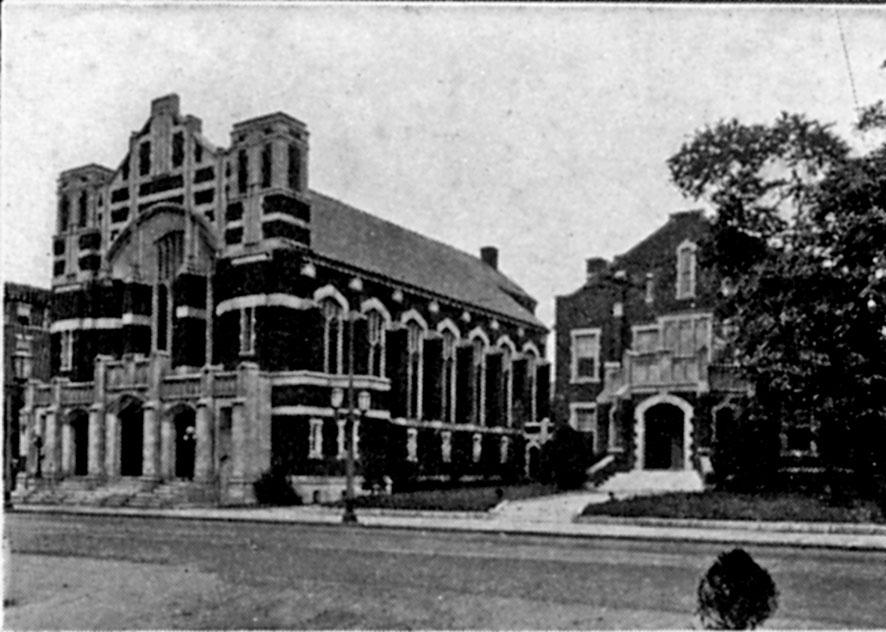
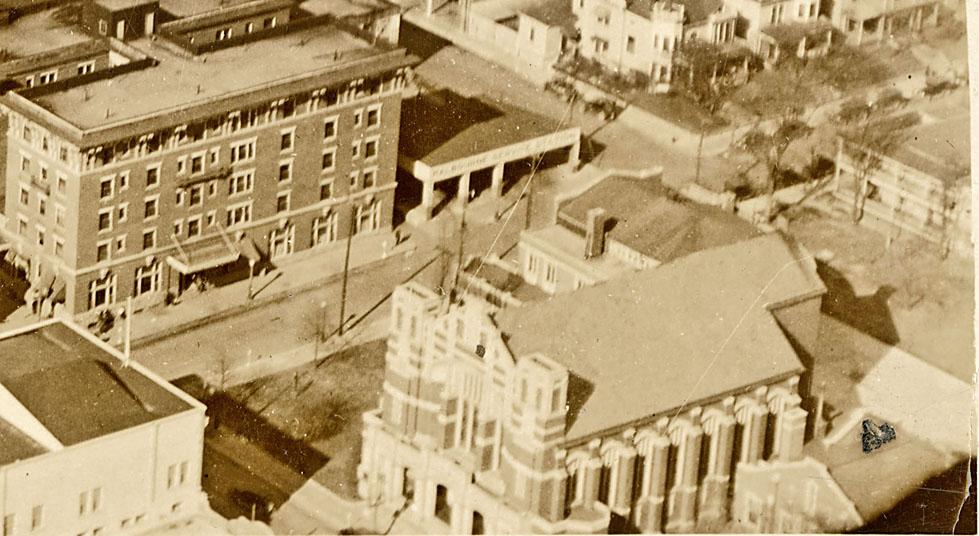
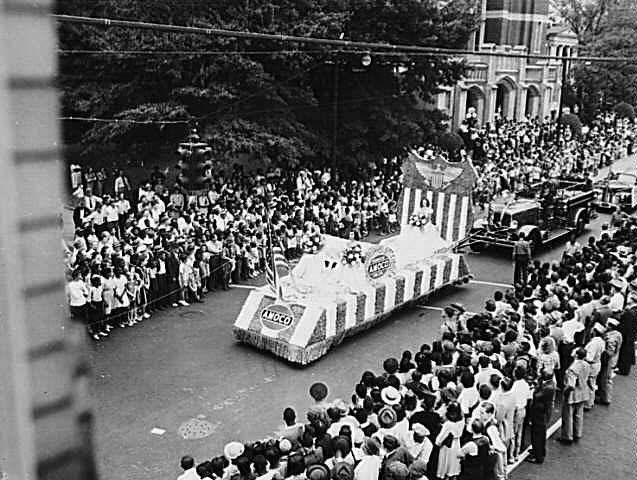
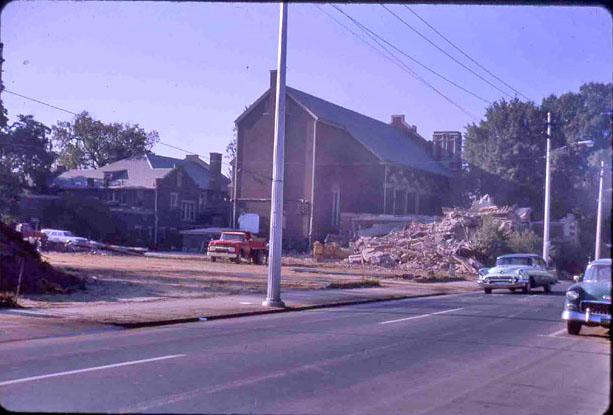
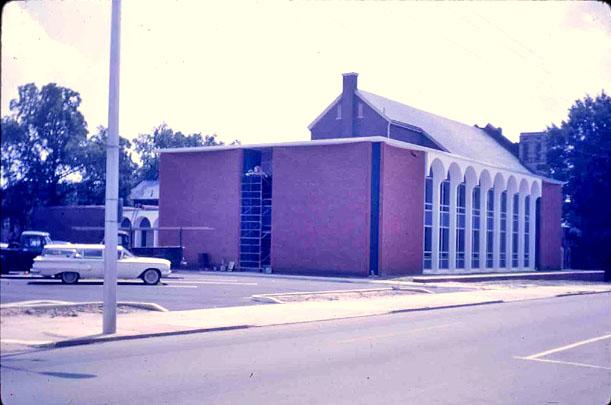
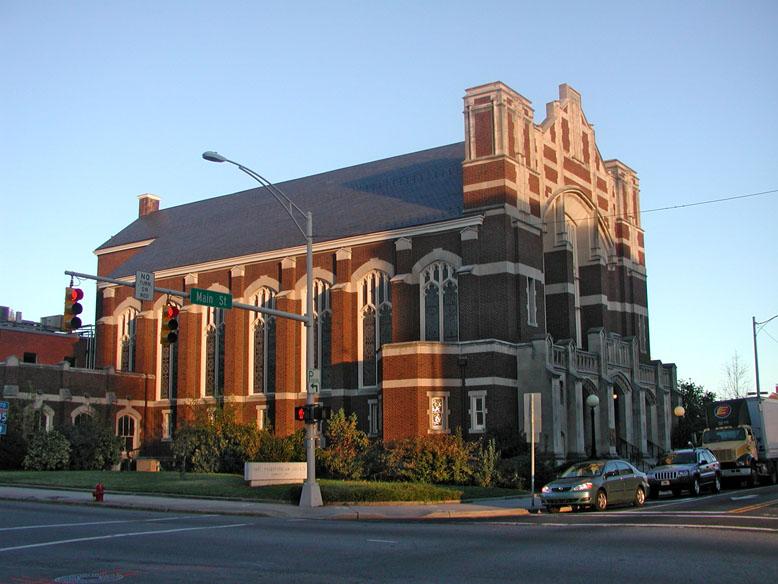
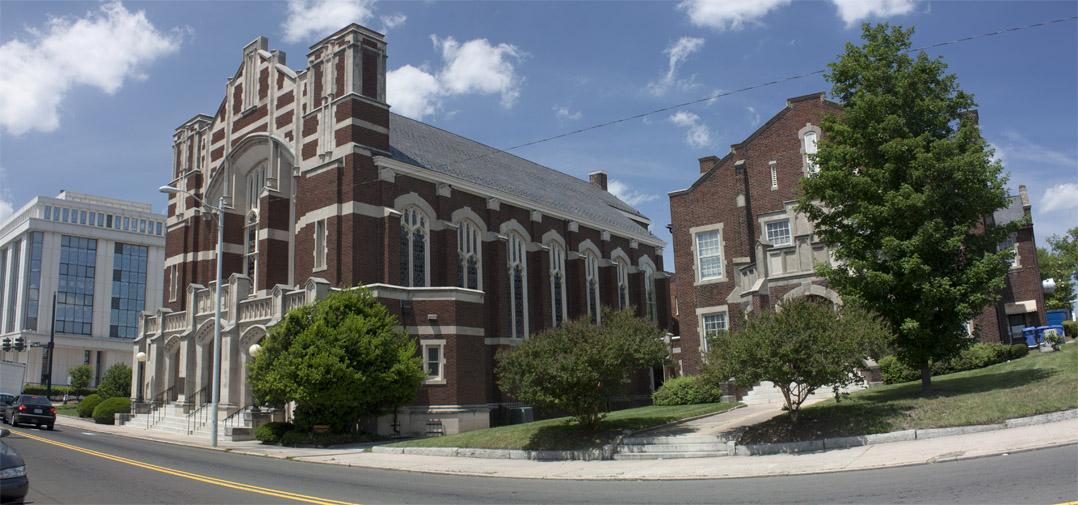

Comments
Submitted by Michael (not verified) on Tue, 5/22/2007 - 9:02pm
I've been waiting on this one for a while. In December last year, after playing on the basketball team for two years, I finally up and joined First Presbyterian, and now I've gotten suckered into singing in the choir.
It wasn't the only thing, of course, or even near the top of the list, but First Presbyterian's physical structure was certainly a draw for me. I absolutely love the stone and brick architecture, even if I'm not usually a fan of the Romanesque style. The huge vertical stained glass windows make up for it, I think, though.
A little more background on the church. The Watts and Hill families were both key members of the church in the early 20th century. Their names are stamped all over the buildings. I don't know to what degree their descendants are still involved. It's quite possible that some of the folks I know in church now are from the family, but I honestly don't know.
The vote to stay downtown in middle part of the century is only half the story. There were two factions, and while I don't think it ever got nasty, one was very intent that the church needed to follow its primary congregants out to the suburbs, specifically, Hope Valley. The result was that 55 members of First Pres. left to form Westminster Presbyterian on Old Chapel Hill Rd. in 1963. This is probably the best result that could have happened, in my opinion. The suburubanizing impulse was satisfied, leaving First Pres intact, if weakened, and it managed to survive and recover while Westminster grew and thrived. The two churches have worked together extensively over the years, so from what I can tell there are few hard feelings over the matter.
One other tidbit to share. It was current Duke Law prof. Robinson Everett's push to get his mother, Katherine, herself the first female grad of UNC Law, named as an Elder of the church that eventually lead to the southern Presbyterian church (the since-merged PCUS) to allow women to serve as elders.
Add new comment
Log in or register to post comments.